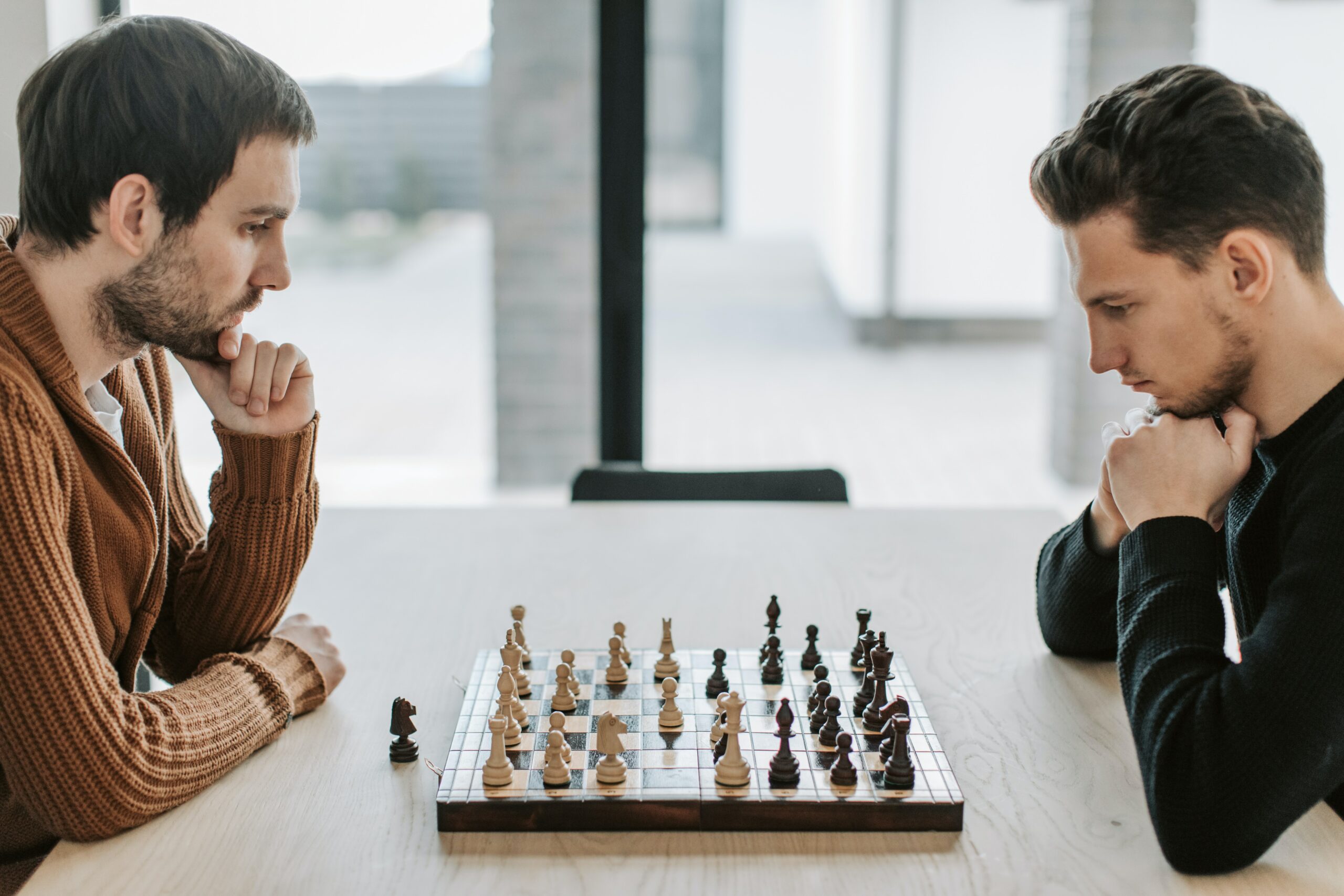Developing strong positional skills is crucial for achieving success in chess. While tactical prowess is essential, understanding and applying positional concepts can give you a strategic edge over your opponents. In this article, we will explore various techniques and strategies to improve your chess positional skills.
Whether you’re a beginner or an experienced player looking to enhance your understanding of the game, this comprehensive guide will provide valuable insights and practical advice to elevate your chess game to new heights. From key principles of positional chess to effective piece coordination and strategic planning, let’s dive into the world of positional chess and unlock the secrets to strategic supremacy.
How can I enhance my understanding of chess positions?
Enhancing your understanding of chess positions is crucial for improving your overall game. One effective way to achieve this is by studying and analyzing games played by top chess players. Pay close attention to their moves, piece placement, and strategic decisions.
By immersing yourself in their gameplay, you can learn valuable lessons about maneuvering pieces, controlling key squares, and formulating long-term plans. Additionally, engaging with annotated chess books and solving positional puzzles can help sharpen your analytical skills and train your mind to evaluate different positions. The more exposure you have to a variety of positions and the thought processes behind them, the better equipped you’ll be to make informed decisions and find optimal moves in your games.
What are the key principles of positional chess?
Understanding the key principles of positional chess is essential for improving your gameplay. These principles serve as guiding lights in your strategic decision-making process. Key principles include controlling the center, developing your pieces harmoniously, creating a strong pawn structure, and anticipating your opponent’s plans.
By controlling the center of the board, you establish a solid foundation for launching attacks and maintaining flexibility in your gameplay. Developing your pieces in a coordinated manner allows for maximum efficiency and the potential to unleash powerful combinations.
Building a strong pawn structure ensures stability and limits weaknesses that can be exploited by your opponent. Lastly, being able to anticipate your opponent’s plans allows you to prepare your countermeasures and maintain control over the game.
How do I develop a solid pawn structure?

Developing a solid pawn structure is a critical aspect of positional chess. The pawn structure not only provides a framework for your piece placement but also plays a significant role in determining the overall position’s dynamics. Aim to establish a pawn structure that supports your strategic objectives.
Avoid creating isolated pawns, doubled pawns, or backward pawns whenever possible, as these can become targets for your opponent to exploit. Maintain pawn chains that provide mutual support and restrict your opponent’s piece activity. By developing a solid pawn structure, you lay the foundation for a strong position and open avenues for effective piece coordination.
What is the role of piece coordination in positional play?
Piece coordination is a fundamental concept in positional chess. It involves harmonizing your pieces to work together as a team, maximizing their collective power and influence on the board. Effective piece coordination enables you to control key squares, create threats, and restrict your opponent’s counterplay.
Look for opportunities to create harmonious piece placement, where each piece supports and reinforces the others. Coordination can be achieved through tactical maneuvers, piece exchanges, and centralized placement. By developing strong piece coordination, you can dominate the board, unleash powerful attacks, and maintain a strong defensive position.
How can I improve my strategic planning in chess?
Improving your strategic planning in chess is crucial for achieving long-term success. Strategic planning involves analyzing the position, evaluating imbalances, and formulating plans based on the unique characteristics of the position. Consider factors such as pawn structure, piece activity, king safety, and potential weaknesses.
Look for imbalances, such as material advantage, positional advantages, or pawn structure disparities, and exploit them to your advantage. Anticipate your opponent’s responses and plan your moves accordingly.
Strategic planning requires a combination of analytical thinking, creativity, and adaptability. By honing your strategic planning skills, you can gain a deeper understanding of the position, make informed decisions, and increase your chances of success.
What are the benefits of studying classic positional games?
Studying classic positional games offers invaluable insights into strategic thinking and positional concepts. Analyzing games played by chess legends such as Capablanca, Botvinnik, and Karpov can enhance your understanding of key principles and strategic ideas. Classic games often demonstrate the application of positional concepts in a clear and instructive manner.
By studying these games, you can learn about effective piece coordination, pawn structure management, exploiting weak squares, and conducting long-term strategic plans. Classic games also showcase the creativity and brilliance of chess masters, inspiring you to think outside the box and develop your unique style of play. Incorporating the lessons learned from classic positional games into your gameplay can significantly improve your positional understanding and decision-making abilities.
| Aspect | Positional Play | Tactical Play |
|---|---|---|
| Focus | Long-term planning | Short-term combinations |
| Strategy | Strategic decision-making | Calculations and tactics |
| Key Elements | Pawn structure, piece coordination, king safety | Calculations, sacrifices, tactical patterns |
| Outcome | Positional advantages, long-term superiority | Immediate material gains, tactical wins |
| Examples | Capablanca vs. Lasker, Karpov vs. Kasparov | Tal vs. Botvinnik, Fischer vs. Spassky |
How can I avoid common mistakes in positional chess?
Avoiding common mistakes in positional chess is essential for maintaining a strong position and preventing your opponent from gaining an advantage. Some common mistakes to be wary of include neglecting piece coordination, making pawn moves that weaken your structure, exchanging pieces without considering the resulting pawn structure, and failing to anticipate your opponent’s plans. It’s important to maintain a vigilant approach and constantly evaluate the consequences of your moves.
Be mindful of your pawn structure and avoid creating weaknesses that can be exploited. Pay attention to piece coordination and ensure that your pieces are actively participating in the game. By avoiding these common mistakes, you can preserve the integrity of your position and increase your chances of success.
How can I evaluate a chess position effectively?
Evaluating a chess position effectively is crucial for making informed decisions and determining the most promising course of action. Start by assessing the key elements of the position, such as pawn structure, piece activity, king safety, and imbalances. Look for weaknesses or imbalances that can be exploited and consider their long-term implications.

Compare the potential of your pieces to that of your opponent’s, identifying any positional advantages or disadvantages. Anticipate future moves and consider the consequences of different strategic plans. By evaluating the position thoroughly, you can develop a deeper understanding of its nuances and make strategic decisions that give you the upper hand.
How can I improve my positional play in closed positions?
Improving your positional play in closed positions requires a distinct set of skills and strategies. Closed positions are characterized by a limited number of open lines and reduced tactical opportunities. To excel in closed positions, focus on maneuvering your pieces to optimal squares, controlling key outposts, and gradually improving your pawn structure.
Develop a plan that involves gaining space, advancing your pawns strategically, and creating weaknesses in your opponent’s camp. Patiently prepare for breakthroughs, probing weak spots in your opponent’s position. By adopting a methodical and patient approach, you can exploit the subtleties of closed positions, outmaneuver your opponent, and achieve positional superiority.
How can I use piece placement to dominate the board?
Effective piece placement is crucial for dominating the board and exerting influence over the position. Centralize your pieces to maximize their scope and coordination. Utilize outposts, squares that cannot be challenged by pawns, to station your knights and exploit their potential.
Coordinate your pieces to create threats and put pressure on your opponent. By strategically placing your pieces on active squares, you restrict your opponent’s options and gain control over important areas of the board.
Remember to consider the specific characteristics of each piece and their respective roles in the position. By employing astute piece placement, you can dictate the course of the game and pave the way for a successful outcome.
How do I exploit imbalances in a position?
Exploiting imbalances in a position is a key skill in positional chess. Imbalances refer to differences between the two sides, such as material advantage, pawn structure, space, piece activity, and king safety. To exploit these imbalances, carefully analyze the position and identify any weaknesses or advantages.
If you have a material advantage, consider simplifying the position to reach an endgame, where your extra material can prove decisive. When you have a superior pawn structure, seek to create passed pawns or weaknesses in your opponent’s structure.
In positions with more space, look for ways to launch powerful attacks and restrict your opponent’s counterplay. By recognizing and capitalizing on imbalances, you can strategically outmaneuver your opponent and tilt the game in your favor.
What is the role of prophylactic thinking in positional play?
Prophylactic thinking is a critical aspect of positional chess that involves anticipating and preventing your opponent’s threats before they materialize. By adopting a proactive approach, you can hinder your opponent’s plans and maintain a strong position. Think several moves ahead and identify potential weaknesses in your position or possible threats from your opponent’s pieces.
Take preventative measures to address these vulnerabilities and create a counterplay of your own. This can involve fortifying key squares, reinforcing your pawn structure, or improving the activity of your pieces. By mastering prophylactic thinking, you not only safeguard your position but also gain a psychological edge, putting pressure on your opponent and dictating the flow of the game.
How can I make the most of open and closed positions?

Open and closed positions require different strategic approaches. In open positions, where there are more available lines for piece movement and tactical opportunities, focus on active piece play and creating threats against your opponent’s king. Open positions often favor knights due to their ability to maneuver across the board effectively.
Seek to control open files and diagonals, and coordinate your pieces harmoniously to maximize their impact. On the other hand, in closed positions, where pawn chains and pawn structures limit the scope of pieces, patience, and strategic pawn play are crucial.
Look for breakthroughs and potential weaknesses to target while gradually improving your position. Understanding the nuances of open and closed positions allows you to adapt your strategy to suit the specific demands of the position and seize the initiative.
What are the strategies for achieving piece activity?
Achieving piece activity is essential for maintaining a powerful presence on the board and increasing the effectiveness of your pieces. First and foremost, prioritize piece development in the opening phase, aiming to get all your pieces into play as quickly as possible. Seek to centralize your pieces, as centralized pieces exert greater influence and control over the position.
Consider pawn breaks and tactical opportunities that can activate your pieces and disrupt your opponent’s setup. Keep an eye on outpost squares, where your pieces can reside without being challenged by pawns, and exploit them to maximum effect. By continuously seeking opportunities to enhance your piece activity, you can create a harmonious and dynamic position that puts constant pressure on your opponent.
Given These Points
Mastering chess positional skills is a crucial step toward becoming a formidable chess player. By enhancing your understanding of chess positions, following key principles, developing a solid pawn structure, coordinating your pieces effectively, and improving your strategic planning, you can elevate your game to new heights.
Studying classic positional games and avoiding common mistakes in positional chess will further sharpen your skills. Remember the significance of controlling the center, assessing position strengths and weaknesses, and utilizing optimal piece placement. By incorporating these strategies, you can gain an advantage over your opponents and achieve strategic supremacy on the chessboard.




